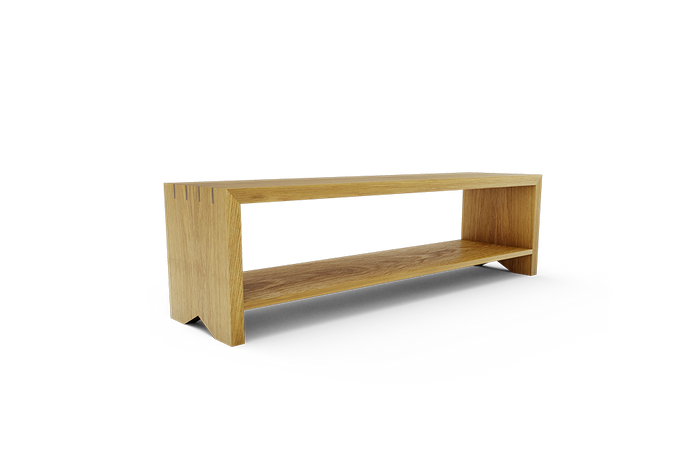- Wood Grain
- The texture produced by wood fibers. A tree creates a new ring every year, this is how we are able to gauge how old a tree is. Once the tree is cut and sliced into boards, the “grain” is what we call the rings when viewed vertically. Most commonly they vary between straight and cathedral shaped lines. A choice you can request when purchasing your table.
- Joinery
- The wooden components of a building or structure.
- Mortise & Tenon Joint
- A locking joint involving a hole cut out to match the shape of a proud piece of wood i.e. a tenon.
- Mortise
- A hole or recess cut out to receive a corresponding projection. Most commonly square or rectangular shaped.
- Tenon
- A projecting piece of wood made for insertion into a mortise.
- Dowel
- A rod of wood without a distinct head, used for holding together the components of a structure.
- Peg
- A square shaped rod of wood without a distinct head, used for holding together the components of a structure.
- Wood Species
- Every type of tree provides us with a different type of lumber. They vary in strength, appearance, durability, grain pattern, water and rot resistance, even smell.
- Strut
- A rod or bar forming part of a framework and designed to resist compression.
- Tusk (Tusked Tenon)
- A long tapered projection used inserted into a mortise. Used as a compression joint to increase the strength of a structure.
- Wedge (Wedged Tenon)
- A small sliver of wood that is tapered. Used to expand the end of a tenon when hammered into slits.
- Breadboard
- An ascetic and functional addition to a table top. Instead of the traditional exposed ends of a table top, the breadboard caps the ends with an additional piece of wood. This provides an ascetic masking of the tables end grain, and also provides more stability in terms of wood movement.
- Cross-Lap Joint
- A structural joint involving the removal of half the material of two mirrored pieces, then instead into each other to reform the same thickness.
- Stretcher
- A piece of wood acting as the joining-frame between two legs or leg sets.
- Bridle Joint
- Like a mortise and tenon, but with the “mortise” being a slot not a hole. This joint is just as strong, but offers more exposure than a mortise and tenon.
- Rabbit
- A 90 degree notch cut on the end or edge of a board.
- Bevel
- A sloped shape from the horizontal or vertical position.
- Blind (Blind Tenon)
- A joinery construction that you cannot see, the connection is made inside the wood and is not visible.
- Knot
- An area of wood grain where a branch grew or tried to grow out of the main trunk. Followed by subsequent growth surrounding it. This results in varying wood grain and even voids.
- Hardwood/Softwood
- Most commonly understood to be trees that have leaves and change with the seasons and trees that have needles and remain the same all year round.
- Sapwood
- The wood that grows directly under the bark - usually lighter in color.



